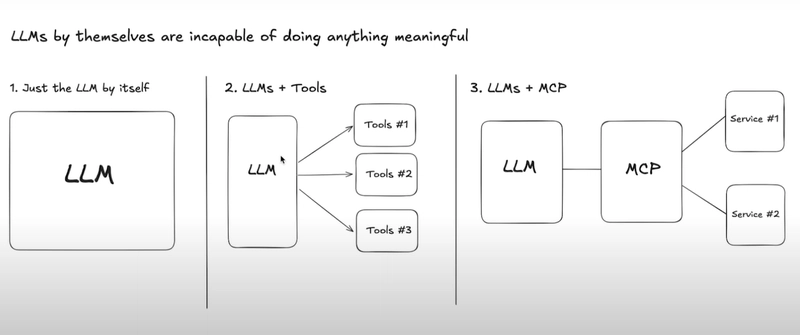Driving Cybersecurity Awareness – CISO Training Resource Guide
Cybersecurity awareness is a critical pillar of organizational resilience in a world where digital threats are constantly evolving. Chief Information Security Officers (CISOs) stand at the forefront of this challenge, defending technical infrastructure and shaping a culture of vigilance across the enterprise. The effectiveness of a cybersecurity program hinges on more than just advanced tools […] The post Driving Cybersecurity Awareness – CISO Training Resource Guide appeared first on Cyber Security News.

Cybersecurity awareness is a critical pillar of organizational resilience in a world where digital threats are constantly evolving.
Chief Information Security Officers (CISOs) stand at the forefront of this challenge, defending technical infrastructure and shaping a culture of vigilance across the enterprise.
The effectiveness of a cybersecurity program hinges on more than just advanced tools and policies; it depends on every employee’s awareness, behavior, and engagement.
As cyberattacks become more sophisticated and frequent, CISOs must lead with vision, ensuring that awareness initiatives are strategic, actionable, and tailored to the organization’s unique risk profile.
This article provides a practical guide for CISOs to drive cybersecurity awareness, optimize training resources, and foster a security-first mindset throughout their organizations.
The CISO as a Champion of Security Awareness
The modern CISO is no longer just a technical expert but a business leader who must communicate risks that resonate with executives and frontline staff.
This expanded role requires CISOs to build bridges between IT, human resources, legal, and communications teams, ensuring that security is embedded in every aspect of the business.
By championing security awareness, CISOs can transform employees from potential vulnerabilities into the organization’s first line of defense.
This transformation starts with a clear vision: security is everyone’s responsibility. CISOs must advocate for regular, relevant training beyond compliance checklists and addressing real-world threats like phishing, social engineering, and ransomware.
By fostering open communication, recognizing positive security behaviors, and providing clear channels for reporting incidents, CISOs can create a culture where employees feel empowered to act as vigilant stewards of the organization’s digital assets.
Ultimately, the CISO’s leadership sets the tone for a proactive, resilient security environment.
Five Key Elements of Effective Cybersecurity Awareness Programs
- Tailored, Role-Based Training: Customize training content to address the specific risks faced by different departments, such as finance, HR, or IT, ensuring relevance and engagement.
- Continuous Learning and Reinforcement: Move beyond annual training sessions by implementing ongoing microlearning modules, simulated phishing exercises, and regular security updates.
- Metrics and Measurement: Track participation rates, assessment scores, and incident response times to evaluate program effectiveness and identify areas for improvement.
- Executive and Stakeholder Engagement: Secure buy-in from leadership and department heads to reinforce the importance of security awareness and allocate necessary resources.
- Integration with Business Processes: Embed security best practices into onboarding, performance reviews, and daily workflows, making cybersecurity a seamless part of the organizational culture.
These elements combine to create a dynamic, adaptive awareness program. By leveraging interactive content, real-world scenarios, and timely feedback, CISOs can ensure that employees are informed and motivated to apply their knowledge.
Regular measurement and reporting help demonstrate the value of awareness initiatives to stakeholders while highlighting opportunities for further improvement.
Building a Sustainable Security Culture
Long-term cybersecurity awareness is achieved not through one-off campaigns, but by nurturing a sustainable security culture that adapts to evolving threats. This requires CISOs to view awareness as an ongoing journey, not a destination.
Begin by conducting a thorough risk assessment to identify your organization’s most pressing threats and vulnerabilities. Use these insights to prioritize training topics and allocate resources effectively.
Collaborate with HR, communications, and department leaders to weave security messaging into the organization’s fabric, from onboarding to executive briefings.
A sustainable culture also depends on recognizing and rewarding positive security behaviors. Highlight success stories, celebrate “security champions,” and provide incentives for employees who demonstrate exceptional vigilance.
Encourage open dialogue about security incidents, treating mistakes as learning opportunities rather than grounds for punishment. This approach reduces fear, increases transparency, and fosters collective accountability.
- Encourage peer-to-peer learning and mentorship, empowering employees to share best practices and support one another.
- Review and update training materials regularly to reflect new threats, regulatory changes, and employee feedback.
Ultimately, the CISO’s leadership is instrumental in shaping attitudes and behaviors that endure beyond any single training session.
By embedding cybersecurity into the organization’s values and daily routines, CISOs can build a workforce that is not only aware of threats but also equipped and motivated to defend against them.
The result is a resilient, security-conscious culture that stands firm in an ever-changing digital landscape.
Find this News Interesting! Follow us on Google News, LinkedIn, & X to Get Instant Updates!
The post Driving Cybersecurity Awareness – CISO Training Resource Guide appeared first on Cyber Security News.





































































































































































![[The AI Show Episode 145]: OpenAI Releases o3 and o4-mini, AI Is Causing “Quiet Layoffs,” Executive Order on Youth AI Education & GPT-4o’s Controversial Update](https://www.marketingaiinstitute.com/hubfs/ep%20145%20cover.png)





























































































































![[DEALS] Mail Backup X Individual Edition: Lifetime Subscription (72% off) & Other Deals Up To 98% Off – Offers End Soon!](https://www.javacodegeeks.com/wp-content/uploads/2012/12/jcg-logo.jpg)











































































































































_Andreas_Prott_Alamy.jpg?width=1280&auto=webp&quality=80&disable=upscale#)
































































































![Severance-inspired keyboard could cost up to $699 – have your say [Video]](https://i0.wp.com/9to5mac.com/wp-content/uploads/sites/6/2025/05/Severance-inspired-keyboard-could-cost-up-to-699-%E2%80%93-have-your-say-Video.jpg?resize=1200%2C628&quality=82&strip=all&ssl=1)




![Google Home app fixes bug that repeatedly asked to ‘Set up Nest Cam features’ for Nest Hub Max [U]](https://i0.wp.com/9to5google.com/wp-content/uploads/sites/4/2022/08/youtube-premium-music-nest-hub-max.jpg?resize=1200%2C628&quality=82&strip=all&ssl=1)



















































































































